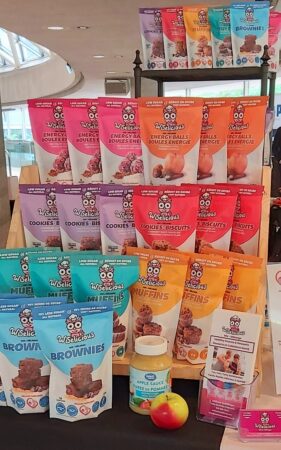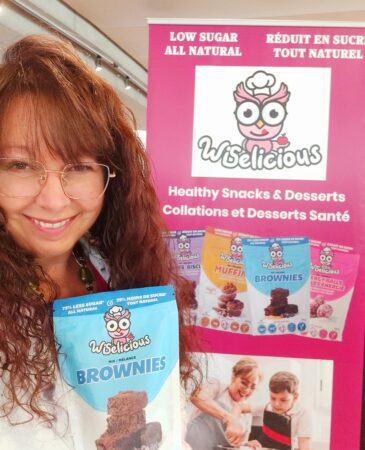
Keeping it simple is the golden rule
By Monica Ferguson
Food Trends Bake & Snack Food Bakery processing clean label Délices SublimesThere is no need to reinvent the wheel when it comes creating baked goods with few ingredients
 As the demand for simpler, healthier options grow, food manufacturers baking with fewer ingredients are poised to benefit from these consumer preferences. Photo © จิตรกร เนาเหนียว / Adobe Stock
As the demand for simpler, healthier options grow, food manufacturers baking with fewer ingredients are poised to benefit from these consumer preferences. Photo © จิตรกร เนาเหนียว / Adobe Stock The process of baking is one of the oldest cooking methods. Since 2600 BCE the Egyptians were making bread by methods similar in principle to those of today. The 2023 Statista Consumer Insights survey found that a majority (58 per cent) of Canadians are actively trying to eat healthy, with 30 per cent of the survey respondents opting to avoid artificial flavours and preservatives. As the demand for simpler, healthier options continues to grow, food manufacturers baking with fewer ingredients are poised to benefit from consumer preferences.
“Formulations for baked goods can be complex. When the goal is to make a baked good with fewer ingredient, it’s important to understand how the ingredients work together and the process necessary to achieve the product’s desired taste, texture, and colour,” said Jane Dummer, registered dietitian, consultant and a Bakers Journal columnist.
The ultimate goal when producing a baked good with limited ingredients is being able to maintain the taste and texture that consumers crave.
“Taste and texture are critically important for bakery products for acceptance by consumers who are looking for healthier products but are not inclined to give up their desire for ‘healthy indulgence.’ Thus, formulators need to make sure that the solutions they provide to improve nutritional profiles meet customer expectations,” said Kyle Krause, Beneo regional product manager, functional fibres and carbohydrates, North America.
Quality over quantity
It is not uncommon to flip over a packaged good to review the ingredients and find a handful of unpronounceable ingredients listed. Often, these long words are shelf stabilizers, texturizers and preservatives used to maintain the product so consumers can enjoy a tasty and safe treat. Given consumers are opting for healthy food without preservatives, it’s valuable to dig into how to manufacture delicious baked goods with limited ingredients.
“Simple and few ingredients could deliver a flavourful, nutritious product with optimal texture,” said Katie Thomas, corporate communications manager, Mondelez Canada. “We always start with our consumers and a back-to-basics approach where you think about how to achieve your goal using the fewest ingredients, like you would in your own kitchen.”

Délices Sublimes produces dry mixes of muffins, cookies, brownies, cake, and energy balls that are naturally sweetened. Photo © Délices Sublimes
Bake profile
Thomas explained that the process of creating a recipe with fewer ingredients boils down to simple ingredients and augmenting recipes to ultimately deliver one that fulfils consumer expectations.
“When developing products with limited ingredients, bake profile can be used to decrease the amount of shelf stabilizers needed,” said Thomas.
Bake profile, also known as thermal profiling, is a baking process for optimization and control. A thermal profile helps ensure food safety and regulatory compliance. It also helps improve product texture, quality, and shelf life by monitoring aspects like yeast kill, bake out zone, product temperature arrival and colour development.
Ease risk of errors
When working with fewer ingredients, it is easier to correct a misstep, thanks to the simple nature of the baked good.
“If a bakery is creating a baked good from scratch, the positive thing about fewer ingredients is that if one ingredient is improperly scaled and added at the wrong time, it is easier to problem solve that formulation compared to a formulation with many ingredients,” said Dummer. “Simplified blends and mixes of dry ingredients can ease the on-site labour and risk of errors, as bakeries reduce the total ingredients in their products and create new ones.”

Julie Barbeau Capruciu, ND, president of Délices Sublimes, believes in using basic ingredients that naturally have long shelf lives. Photo © Délices Sublimes
Dry mixes
A popular growing-alternative is direct-to-consumer dry mixes made for baking at home. Companies such as Second Spring Foods in Seaforth, Ont., create options like organic banana bread mix with no additives, artificial flavours, or preservatives.
“It’s a question of using ingredients that have a long and natural shelf stable life to start with,” said Julie Barbeau Capruciu ND, president of Délices Sublimes, a small business that produces dry mixes of muffins, cookies, brownies, cake, and energy balls that are naturally sweetened.
Capruciu is a naturopath by training and passionate about nutritious food. When she was pregnant with her third child, she developed pregnancy diabetes. She then decided to sweeten snacks for her and her family by adding fruit and vegetable purees in addition to using organic whole grains, naturally rich in protein and fibre.
“I am trying to promote real food with basic ingredients that people all know,” said Capruciu.
Vegan, gluten free and reduced sugar
For vegan options, breads are relatively straightforward to create using only plant-based ingredients, however, baked goods are often reliant on eggs and dairy ingredients like butter, and this can be more complex, explained Dummer.
“There have been helpful advancements with pulse ingredients over the past five years. For example, the industry has seen positive developments in egg replacers available. As a result, improved ingredients and ingredient technology can remove the trial-and-error testing for the processor. Gluten-free ingredients have seen improvements as well. Specifically, when it comes to gluten-free flour options available (for example, sorghum) and flour mixes and how these flours and mixes work with fewer ingredients to achieve the anticipated textures and tastes, while boosting the nutrition in gluten-free bread or baked goods,” said Dummer.
Beneo offers a prebiotic chicory root fibre, oligofructose, which is a soluble fibre and can be incorporated into a variety of baked goods. It can increase fibre content while allowing manufacturers to reduce the sugar or fat content of their products.
“Thanks to the technical properties of chicory root fibre, producers can develop products without compromising on taste and texture. This soluble fibre can stabilize water into a creamy structure, mimicking fat, important for fillings,” said Krause. “Additionally, the humectant properties of oligofructose allow for moisture retention in baked goods like muffins and cakes while also delivering sugar-like flavour and mouthfeel.”
Chicory root fibre also allows for easy processing without changing production processes. At only 2 kcal/g chicory root fibre enables food manufacturers to produce reduced-calorie and fibre-enriched versions of traditionally indulgent baked goods and snacks such as cereal bars, baked goods, and fillings.
Keep it simple
Ultimately, if the goal is to produce a baked good with fewer ingredients and maintain a flavourful profile—the standard is, use simple and quality ingredients.
When unusual flours and ingredients enter the mix, it can be counterintuitive as some flours require a much more rigorous processing cycle. While crafting baked goods with limited ingredients requires a thoughtful approach that balances flavour, texture, and nutritional aspects, there is no need to reinvent the wheel.
This article was originally published in the February/March 2024 issue of Food in Canada.
Print this page